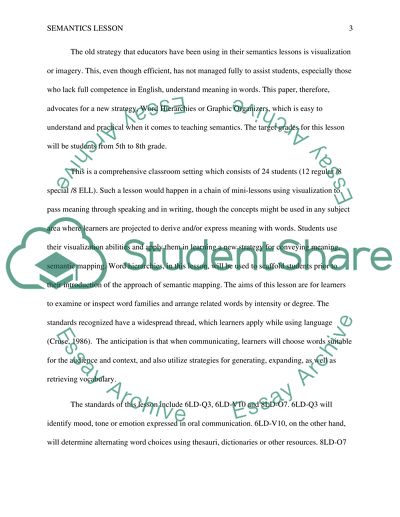Semantics Lesson Essay Example | Topics and Well Written Essays - 1000 words. Retrieved from https://studentshare.org/education/1470311-semantics-lesson
Semantics Lesson Essay Example | Topics and Well Written Essays - 1000 Words. https://studentshare.org/education/1470311-semantics-lesson.


